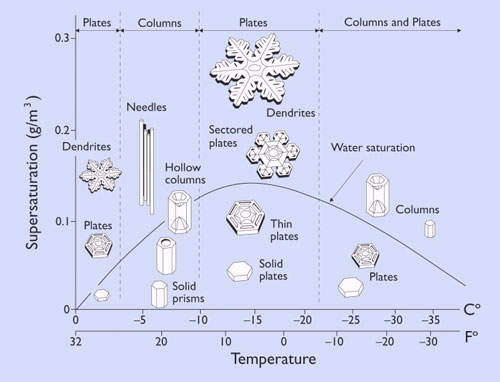
Water normally begins to freeze at near 0°C but can remain liquid to -40°C. Suspended in the air, water vapor needs a seed to begin crystallization.
Crystals form by aligning molecules into a particular order, and water is no different; the seeds help align the water molecules into the requisite pattern.
Dust and other particles work, but collisions between water vapor can also sometimes align the molecules.
Once ice starts to form in the air, it can continue to grow or shed, falling to the ground, depending on atmospheric conditions. The actual shape and size
of the ice depends mostly on the available water in the air and the temperature.

This graph shows the relationship between air moisture and temperature in relation to the formation of ice crystals, or snow. As long as conditions hold,
snow continues to grow as it decends from the sky. In fact, as the snow moves through various ranges of temperature or saturation, it can pick up
different growth patterns such as columns with plates on the ends.